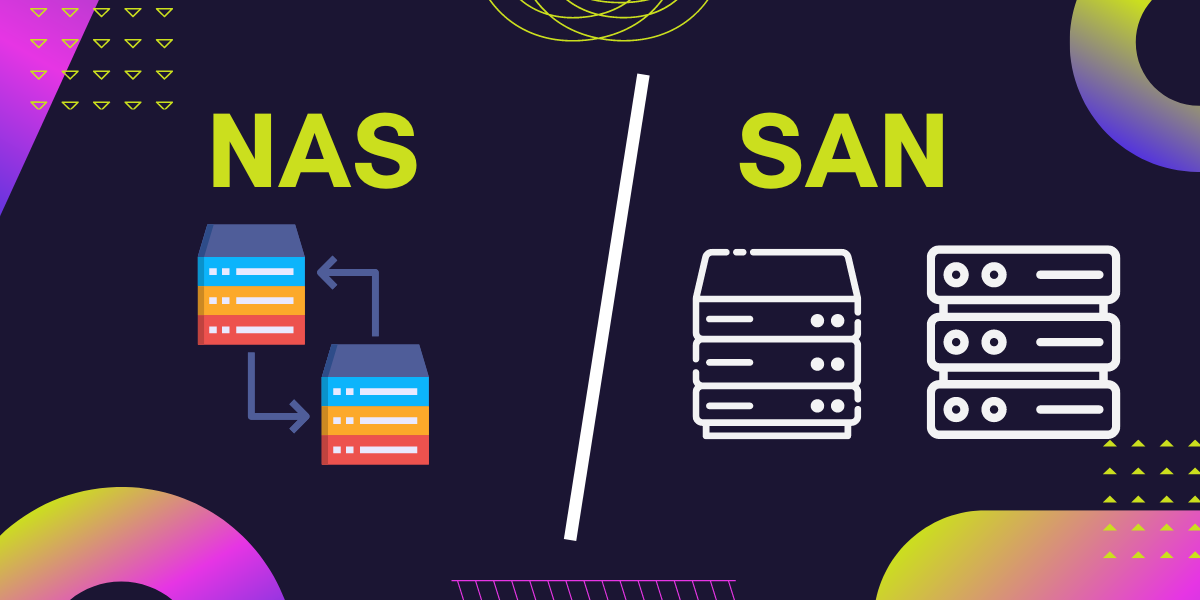In the ever-evolving world of technology, storage options have been rapidly expanding as businesses continue to generate and consume massive amounts of data. Two of the most popular storage solutions in use today are the Storage Area Network (SAN) and Network-Attached Storage (NAS). While both offer similar functionality, there are key differences that affect performance, scalability, and cost. In this article, we break down the differences between SAN and NAS, helping you make an informed decision for your organization.
SAN vs NAS: An Overview
A SAN is a specialized, high-speed network that connects storage devices to servers and other clients, enabling them to access and manage data as if it were locally attached. SANs operate at block-level, meaning data is accessed by identifying sectors of physical disks, and will contain technologies such as Fibre Channel, iSCSI, and FCoE for data transfer.
NAS, on the other hand, is a file-level storage system that allows clients to access and share files over a network. Network Attached Storage devices usually connect to the network using Ethernet, and are designed for file-level operations, often with technologies such as NFS and SMB for data transfer.
Performance
One of the key differences between SAN and NAS is performance. SANs are designed for high-speed data transfers and block-level transactions, making them ideal for database, virtualization, and business-critical applications. NAS, however, has lower data transfer rates due to its file-level technology and is more commonly used for file-based storage, like data archiving and backup.
Scalability
When it comes to scalability, SAN offers a more expensive yet more scalable option. SANs are designed to handle huge amounts of data and can support multiple servers and storage devices with ease. Scale out nas is less scalable, as it requires a separate device for each server that needs to access data. However, recent developments in NAS technology have allowed for clustering or scaling multiple NAS devices together for greater capacity and performance.
Cost
When it comes to cost, NAS is generally more affordable than SAN. NAS is more straightforward to set up and maintain, which translates into lower overall costs. SAN is more expensive because of its premium hardware, storage disks, networking devices, and qualified staff to administer them. However, if your business needs faster, more comprehensive storage options, SAN is the way to go.
Conclusion
Both SAN and NAS have pros and cons, and the right one for your organization will depend on your specific requirements. If you’re looking for high-speed data transfers and robust connectivity for business-critical applications, then SAN is the way to go. However, if you’re focused more on file sharing, data backup, and low cost, then NAS might be the right choice. In case you're unsure about the ideal choice that aligns with your needs, don't worry! We're here to provide assistance. Feel free to get in touch with us today, and we'll be more than happy to help you out.
